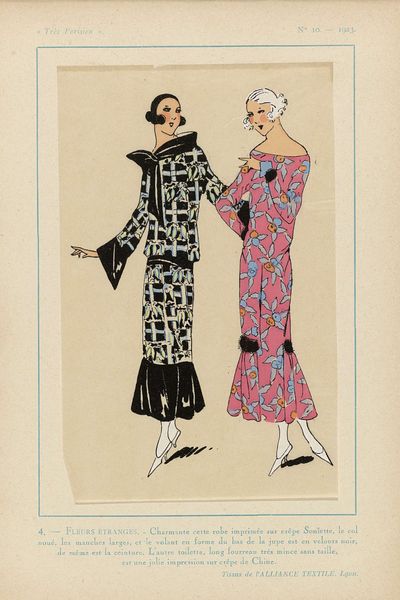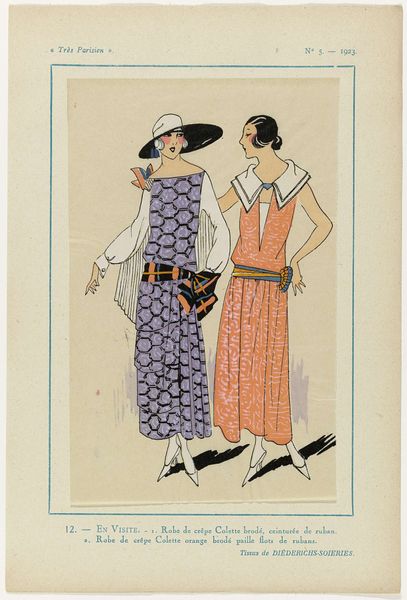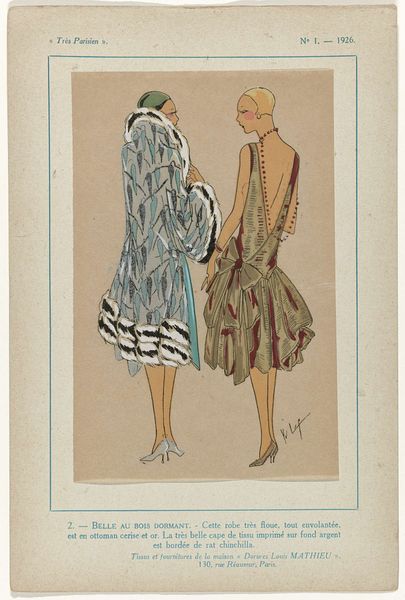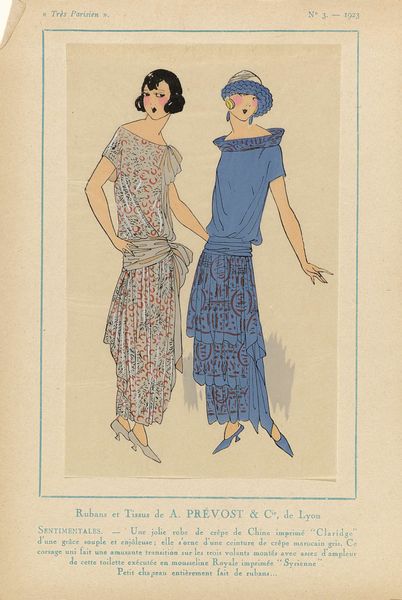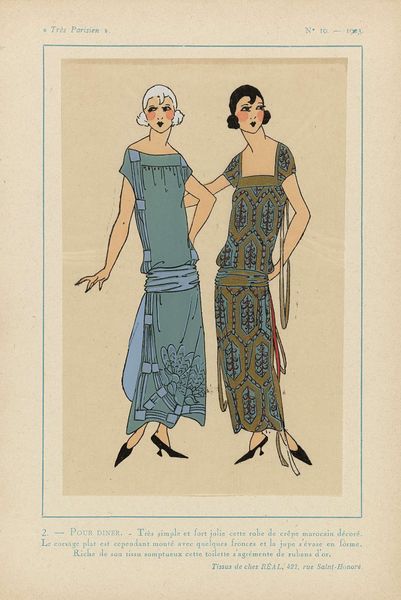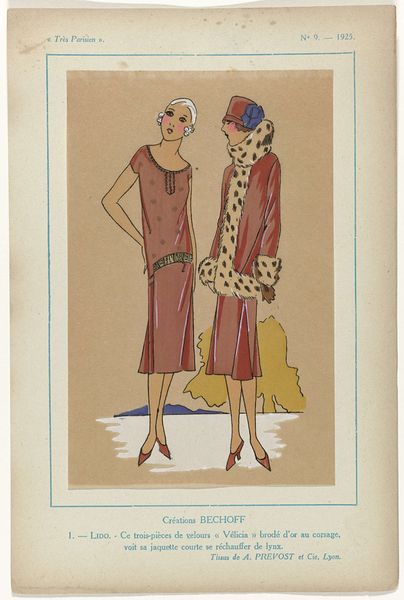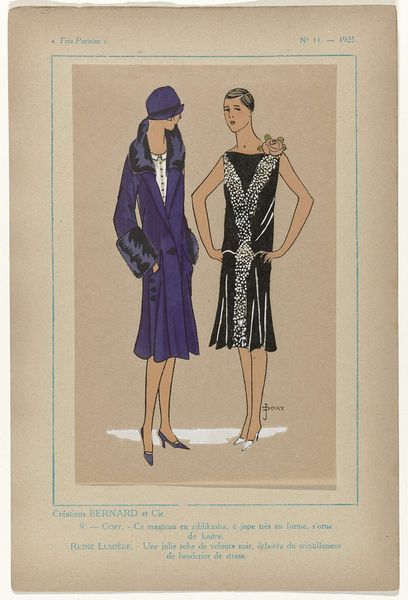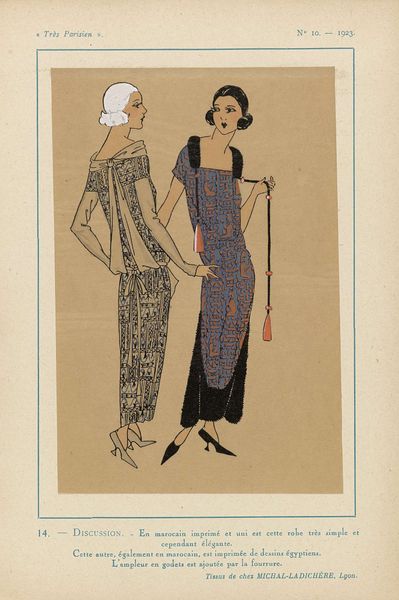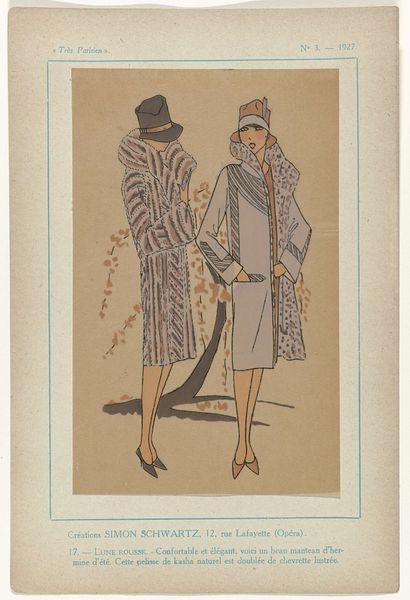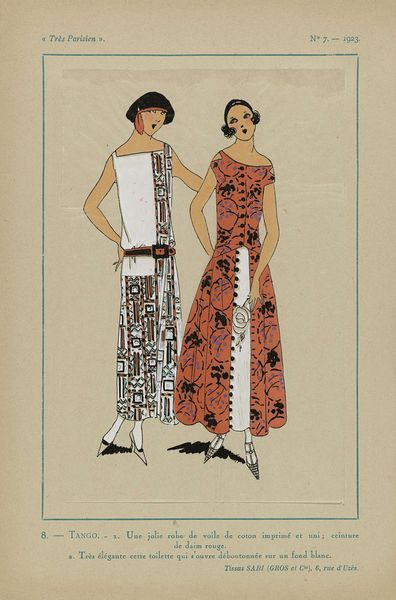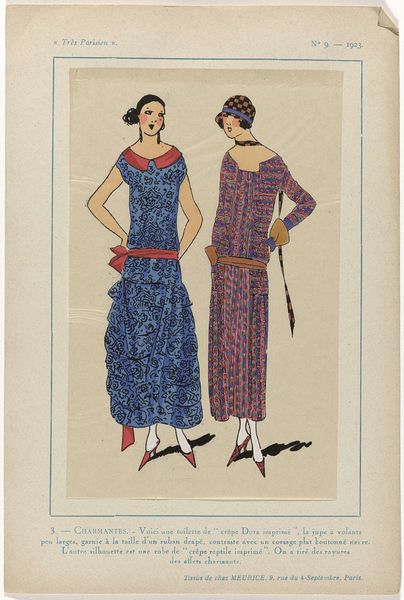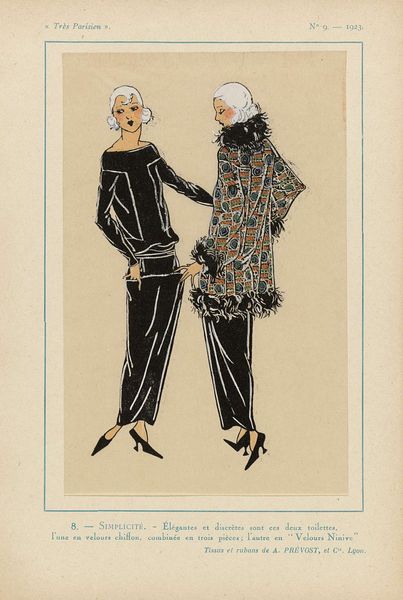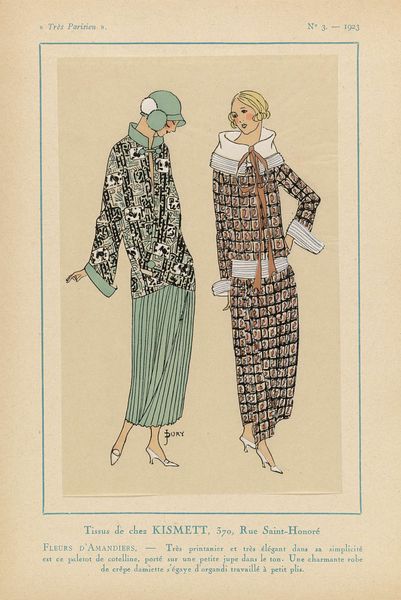
Dimensions: height 269 mm, width 180 mm
Copyright: Rijks Museum: Open Domain
Editor: This is "Très Parisien, 1923, No. 3: Tissus de GEORGES CERF...Footing," a print by J. Dory from 1923. It feels like a window into a very specific moment in fashion history, a kind of illustrated advertisement. What do you see in this piece from a historical perspective? Curator: This print speaks volumes about the democratization of fashion and art in the early 20th century. The title itself, "Très Parisien," is a clear indicator of aspiration and the marketing of Parisian style. Before mass media, prints like these were crucial in disseminating trends. Note the geometric, almost Art Nouveau elements mixed with what the text calls crepe and "etrusque" cashmere. Editor: So, it's not just about showcasing clothing, but also selling a certain lifestyle and cultural identity? Curator: Precisely. Think about the institutional context: these prints would have been displayed in tailors' workshops and haberdasheries, shaping consumers' desires. How do you perceive the models themselves, their poses and expressions? Editor: They seem very stylized, almost like mannequins, yet with a hint of individuality. It’s a blend of aspiration and commercial presentation. Almost a sense of artificiality? Curator: That tension is key. Consider the socio-political landscape post-World War I. There was a desire for modernity, for shedding old constraints, and these prints reflect that desire through their promotion of new fabrics, new silhouettes, and a "Parisian" identity, influencing consumer habits. Are we seeing echoes of class dynamics in such fashion prints? Editor: I never really considered fashion from that point of view. It seems it served more functions than merely clothing people. Now I'm aware of fashion's cultural influence in 1920's. Curator: Absolutely! This one print shows how art functioned in advertising and selling an aesthetic ideal in post-war society.
Comments
No comments
Be the first to comment and join the conversation on the ultimate creative platform.
